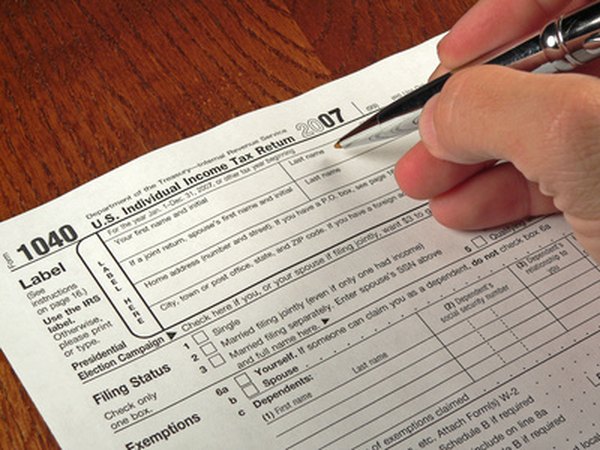Is Social Security Tax Refundable?
Only excess Social Security taxes withheld can lead to a tax refund.
tax forms image by Chad McDermott from Fotolia.com
Generally speaking, Social Security tax is withheld at a flat rate up to a maximum level of employment income and isn't subject to deductions or credits, so you won't usually get a refund of Social Security tax when you file your return. Of course, if you live long enough or become disabled, you ultimately will see payments from Social Security tied to what you paid in to the system. In some cases, you may have too much tax withheld and need to get a refund from your employer or the IRS.
Tip
If your employer erroneously withholds too much Social Security, contact the company for a refund. If you have multiple jobs and end up having too much total Social Security withheld, you can get a Social Security tax refund when you file your tax return.
Excess Social Security Tax Withheld
If your employer makes a mistake and withholds too much Social Security tax from your paychecks, you should first contact your employer and ask for the mistake to be corrected. If you're unable to get a refund from your employer, you can file for a refund from the Internal Revenue Service using IRS Form 843.
Include a copy of your W-2 showing the amount of tax withheld. If you're on a work visa and should not have Social Security tax withheld under the terms of your visa, include copies of your visa stamp and other relevant immigration documents.
In some cases, you may have excess Social Security tax withheld because you have more than one employer. With multiple employers, Social Security tax can sometimes be collected in excess of the maximum taxable total salary, which for 2018 is $128,400. The employee portion of Social Security tax is 6.2 percent of wages up to that threshold, which generally increases each year with inflation. If you make more than that amount, you do not owe any additional Social Security tax.
If you have multiple employers and end up paying too much Social Security tax, you can get a refund from the IRS. Claim the excess tax as a credit against your personal income tax when you file your annual tax return.
Consult IRS Publication 505 for information and worksheets to compute the excess withholding. Make sure to use the worksheets from the appropriate tax year, since the maximum Social Security tax changes from year to year.
If you work for a railroad, you may pay Railroad Retirement Tax Act tax in lieu of Social Security tax. The system works similarly and you can claim a refund in a similar way if need be.
Medicare tax doesn't have a wage cap and is simply a flat tax on all earnings, so this issue doesn't come up with Medicare tax.
Self-Employed Workers
Remember that if you are self-employed full time or part time, you generally must still pay Social Security and Medicare tax on your earnings. You must pay both the employee and employer portions of these taxes, which is sometimes known as self-employment tax. Remember to budget for this in addition to your regular income tax.
Compute, file and pay your self-employment tax as part of your ordinary income tax return. If you anticipate owing more than is withheld from any paychecks, or you are entirely self-employed and don't receive any paychecks, you may need to pay quarterly estimated taxes or you will face an IRS penalty.
2018 Tax Law Changes
The laws around Social Security tax are mostly staying the same for 2018, but the maximum taxable wage is increasing to $128,400.
2017 Social Security Tax
For 2017, the maximum taxable wage for Social Security tax is $127,200. Remember to use this figure for 2017 returns.
References
Resources
Writer Bio
Steven Melendez is an independent journalist with a background in technology and business. He has written for a variety of business publications including Fast Company, the Wall Street Journal, Innovation Leader and Ad Age. He was awarded the Knight Foundation scholarship to Northwestern University's Medill School of Journalism.

